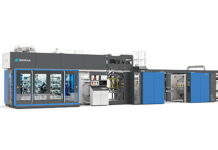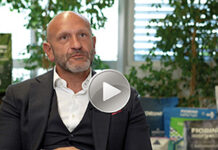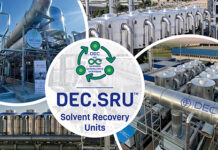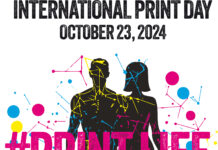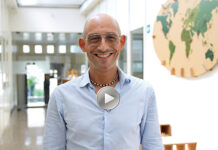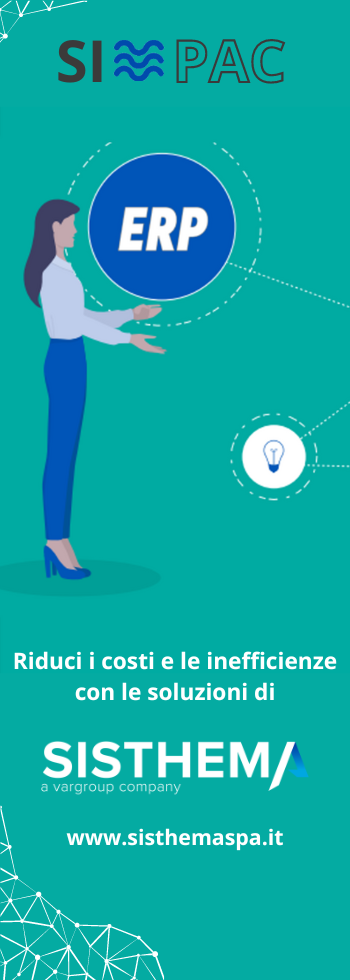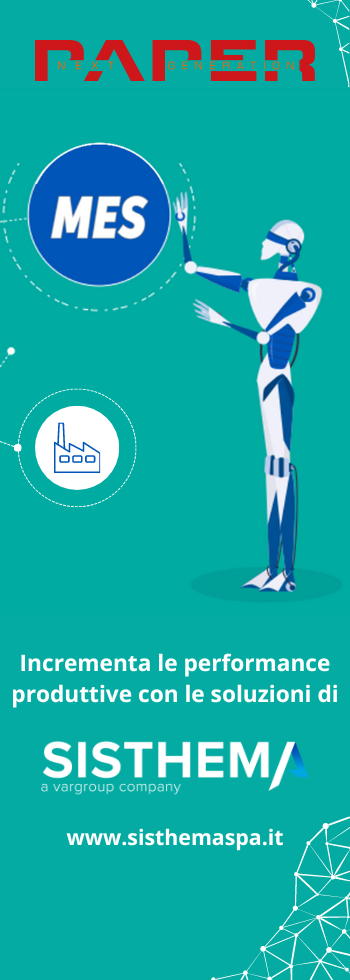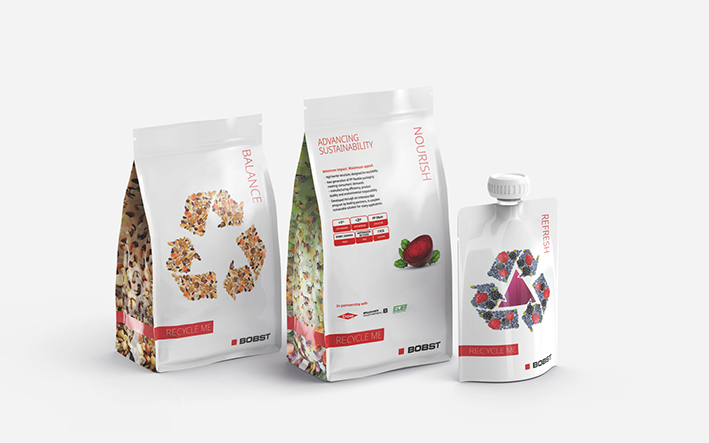 While the sustainability of packaging has been an important topic for Brand Owners for several years, the need to implement meaningful solutions has significantly gathered pace in the last year or two. Consumers are rapidly becoming more environmentally conscious, and packaging recyclability is now a major decision factor in their purchasing. Indeed, 48% of consumers in the US said they would definitely or probably change their consumption habits to reduce their impact on the environment, while among millennial consumers, the figure reaches 75%.1
While the sustainability of packaging has been an important topic for Brand Owners for several years, the need to implement meaningful solutions has significantly gathered pace in the last year or two. Consumers are rapidly becoming more environmentally conscious, and packaging recyclability is now a major decision factor in their purchasing. Indeed, 48% of consumers in the US said they would definitely or probably change their consumption habits to reduce their impact on the environment, while among millennial consumers, the figure reaches 75%.1
Many businesses have publicly declared very ambitious sustainability targets as a result, promising entirely recyclable materials in their packaging production and alternatives to plastic.
“What we have seen in the last 18 months is very different to what was happening before,” says Eric Pavone, Business Development Director, BU Web Fed at BOBST. “Previously, sustainability was being utilized almost like a marketing approach, but in reality, not much progress was being made. In the last 18 months or so, the pressure has grown to the extent that the industry has really shifted gears and now companies have dedicated huge R&D budgets to the sustainability, biodegradability and recyclability of their packaging. Many of the self-imposed deadlines are challenging, but there is a real focus on this area now that makes them more achievable”.
As a result, sustainability is now driving great innovation, and the potential rewards are significant. Innovative delivery models and changing use patterns are calculated to be worth approximately $9 billion to the plastics industry.2
“We need to recover 20 years of engineering”
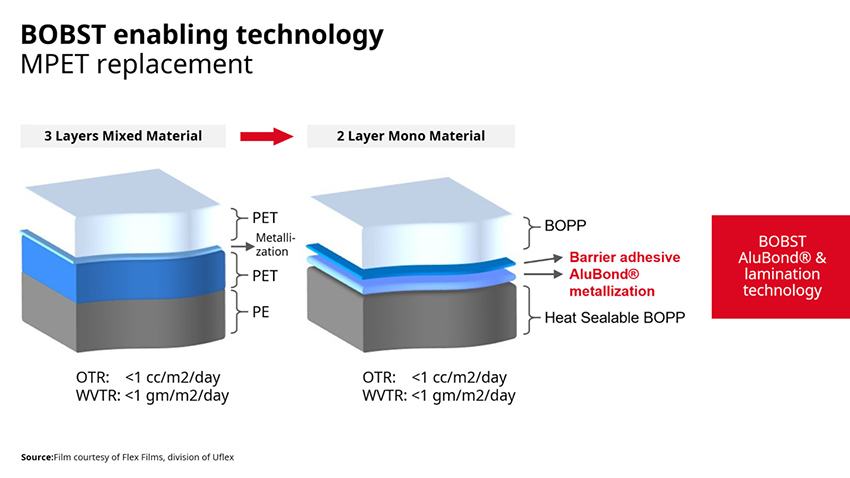 The key challenge for Brand Owners – particularly in the food industry – is producing new packaging materials without sacrificing the security, freshness, appeal and visibility of the product inside.
The key challenge for Brand Owners – particularly in the food industry – is producing new packaging materials without sacrificing the security, freshness, appeal and visibility of the product inside.
Most flexible packaging is a combination of several materials, or polymers (e.g. polyester, polypropylene, polyethylene). Multi polymer materials used in flexible packaging are sophisticated formulas, adept at protecting food (for example) from oxygen, water and so on. But mixing polymers makes the task of recycling much harder and, given there is no standard composition of multi-polymer packaging, there is no feasible standard method to unpick and recover these materials.
“Recyclability really means mono polymer,” says Eric Pavone, “As soon as you mix you have problems. But mono polymers traditionally don’t perform to the level of multi polymer materials. The big challenge we face is that today’s flexible packaging is a highly sophisticated engineered product, which is the result of two decades of innovation and development. We need to recover 20 years of engineering as soon as possible to find mono polymer materials that perform as well as today’s packaging, while also ensuring the same machine efficiency in the whole value chain of packaging. It’s a challenge, but one we are making good progress with.”
Partnerships bring progress
BOBST has teamed up with several partners to produce new high barrier mono material flexible packaging solutions designed for recyclability. The project has involved using different high barrier mono-material structures, each one thoroughly tested to guarantee all industry requirements were met in terms of processability, barrier, safety and optical quality. The different types of mono-material standup pouches (MDO PE, BOPE, BOPP and CPP) were first displayed at K 2019 in Düsseldorf, and are the outcome of considerable investment and intense research by the partners.
The partners include Dow, a resin supplier for the first step in the production chain, Brückner Maschinenbau for the production of the biaxial stretched polypropylene and polyolefin-based films, Hosokawa Alpine for the production of MDO LDPE, Elba to convert the finished reels into pouches, and Constantia Flexibles to produce metallized high barrier LDPE standup pouches.
The joint project team is working on these innovations utilizing the BOBST Competence Centers for high barrier, printing and lamination to test the viability of the new materials. The team have been able to leverage BOBST unique technologies to see the production process through and carry out barrier and adhesion tests on the substrates in BOBST laboratories equipped with world-class measuring equipment.
“This is the first of a new generation of mono-material laminates,” says Eric Pavone. “We established a group of partners because this is a pressing challenge and we need to work together and pool our engineering know-how – separately we will get nowhere. There are industrial high barrier solutions existing in the world but now we need more and more solutions offerings and adopters, and then we will start to see more industrial-scale offerings.”
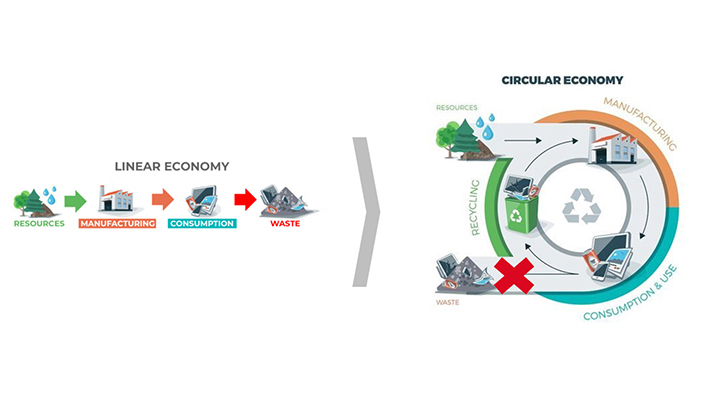
Balancing high sustainability with high quality
A major focus for BOBST and its partners – now that they have produced a range of mono polymer materials – is to optimize their viability in the packaging production process and ensure the quality achieved today on multi-polymer is achieved.
“These substrates react differently, the parameters are different, so we need to keep moving forward to ensure these materials perform as well in all aspects as the ones we currently use,” says Eric Pavone. “Yes, sustainability is the number one priority for Brand Owners now, but they do not want to make concessions on the visual appeal of their product packaging. So a challenge for us is to bring 100% recyclability without any compromise on appeal. We need material to be scratch-resistant for example, which is challenging with mono materials.”
Innovation on overdrive
So, what’s next?
“A major focus for everyone in the industry is developing biodegradable plastics that meet sustainability criteria and can be widely utilized in packaging processes,” says Eric Pavone. “Because at BOBST we have all the relevant technology to be able to test the viability of industrializing new materials from raw material to printed and converted packaging and labels, we can add a lot of value in this area.”
Eric also highlights the potential of paper, which he says has high interest in the industry. Consumers already like paper and because it is a natural fiber, it is degradable and recyclable. But paper does not have the high barrier properties needed of plastic and similar materials, so a lot of current R&D focus is on finding ways to bring the high barrier properties to paper.
Ultimately, packaging must fulfil its primary purpose: to protect the product inside. But as environmental pressures increase, the need for packaging to be completely sustainable and recyclable reaches an equal priority. With the rate of current innovation, it may not be too long before we achieve it.
References





